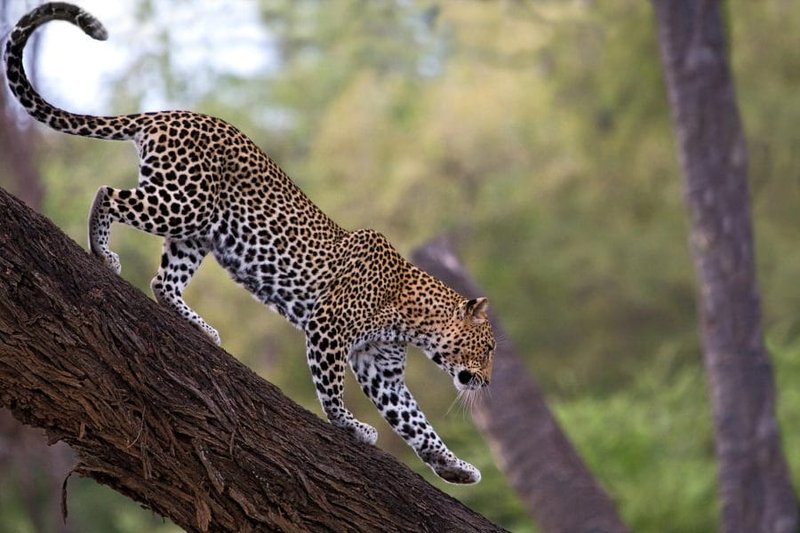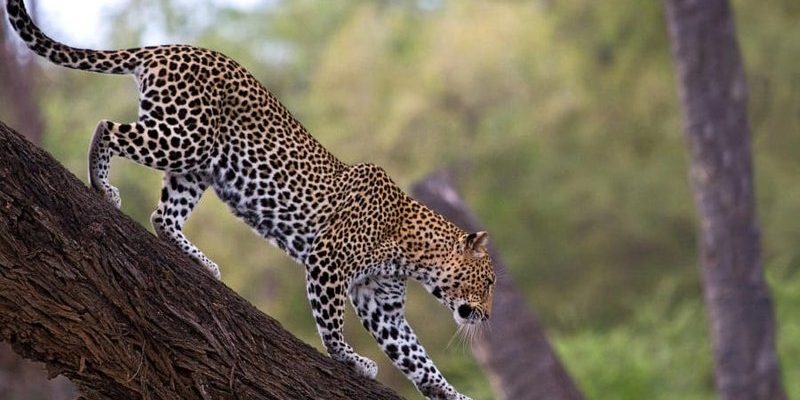
Imagine a leopard mom as a single parent in a bustling city, balancing the demands of work and family. She has to keep her cubs safe from dangers, teach them vital life skills, and ensure they’re well-fed. In the wild, it’s not just about survival of the fittest; it’s about survival with technique, love, and a touch of instinct. Let’s dive into how leopards manage the tough yet beautiful job of raising their young in the wild.
Choosing a Den: The First Step in Their Journey
Before a leopard gives birth, she puts a lot of thought into where she’ll have her cubs. This is serious business! The choice of a den is crucial for their safety. Leopards often find hidden spots in dense vegetation, rocky crevices, or even hollowed-out logs.
Why is this so important? Well, leopards face threats from other predators like lions or hyenas. A safe den helps keep their precious cubs out of sight. Imagine putting a “No Trespassing” sign on your front lawn, but way more effective. The mom chooses a spot that not only hides her cubs but is also close to water and food sources for easy access.
Once she finds the perfect den, the leopard’s instincts kick in. She’ll clean the area to reduce any scent that could attract attention. It’s like setting the stage for a big performance, making sure everything is just right for the show.
The Birth of the Cubs: A Special Moment
When the moment arrives, it’s a big deal! A female leopard typically gives birth to 2 to 4 cubs after about 90 to 105 days of pregnancy. Each cub weighs around a pound and is born blind and helpless, relying entirely on their mother. It’s a vulnerable time, not just for the cubs but for the mom as well.
After the birth, the leopard mom stays in the den for about 6 to 8 weeks. During this time, she won’t venture far, ensuring her little ones remain safe and sound. You might be wondering how she feeds them. Well, she produces milk, just like any mammal, and those tiny cubs are always hungry!
As they grow, their eyes will open, and they’ll start to explore their surroundings. You can imagine the wonder they experience, seeing the world through curious little eyes for the first time. It’s an enchanting moment in the life of a leopard.
Feeding and Hunting: Lessons in Survival
Once her cubs are old enough to leave the den, the leopard mom begins to teach them vital survival skills. This involves a lot of play and practice. The cubs will shadow their mother as she hunts, learning the ropes in a safe environment. Watching a leopard mom show her cubs how to stalk quietly or climb trees is like watching a master chef teach cooking techniques.
Leopards are solitary hunters, and this skill is crucial for their young. They hunt small to medium-sized animals like antelope, deer, and birds. The mom might catch prey and then take it back to her cubs, ensuring they get the nutrients they need to grow strong and healthy.
Sometimes, she’ll even bring them fresh food from her kills. It’s like a home-cooked meal served with love. The more they practice, the better they become. By the time they’re around six months old, they start to hunt alongside her. Talk about a family business!
Keeping Safe: The Importance of Defense
As any leopard mom knows, safety is everything. While she’s busy teaching her cubs to hunt, she’s constantly on the lookout for potential dangers. Predators can strike at any time, and a mom has to be vigilant.
Leopard cubs, like any young creatures, can be quite curious. This can sometimes put them in risky situations. Mothers use their sharp instincts to protect their young ones from threats. If a potential danger arises, she’ll quickly call her cubs back, or in some cases, she might take them to a new den.
This protective behavior is similar to how humans might shield their kids from dangers in the city. Whether it’s traffic or strangers, the instinct to protect is deeply embedded in both species.
Growing Up: Reaching Independence
Leopard cubs are usually weaned by around three months, but they stay with their mother for up to two years. This extended time allows them to learn everything they need for a solitary life. It’s like going through a comprehensive training program!
During these formative years, they absorb lessons about hunting, territory, and survival strategies. They also learn to establish their own ranges, which is critical for their future success. You might think of it as a rite of passage into adulthood—much like a graduation ceremony.
As they approach independence, the mom slowly starts letting them venture out on their own. It’s bittersweet; she’s proud of their development but knows they must fend for themselves soon. At about two years old, they’ll leave her territory to find their own way in the world.
The Impact of Environment on Raising Cubs
The environment where leopards raise their young plays a massive role in their development. In regions with abundant prey and fewer threats, leopard cubs may thrive better than in harsher conditions. They depend on their surroundings for food, shelter, and safety.
For instance, leopards living in savannas may have an easier time hunting, while those in forests face challenges with dense vegetation that can hinder movement. This variation impacts how quickly cubs learn essential skills, affecting their chances for survival later.
Climate change and habitat loss can disrupt these natural processes. As their environments change, leopards face new challenges in rearing their young, making it even more critical for conservation efforts to maintain their habitats.
Understanding how leopards raise their young in the wild gives us a glimpse into their world, full of beauty and challenges. From choosing the perfect den to teaching vital survival skills, leopard mothers navigate a delicate balance of nurturing and protecting.
In the end, every aspect of their parenting is designed for one goal: survival. It’s a heartwarming yet stark reminder of the circle of life. By appreciating these magnificent creatures and the trials they face, we can better understand the need to protect their habitats for future generations. So, the next time you think of leopards, remember the incredible journey of parenting they embark on—it’s a story worth telling.

